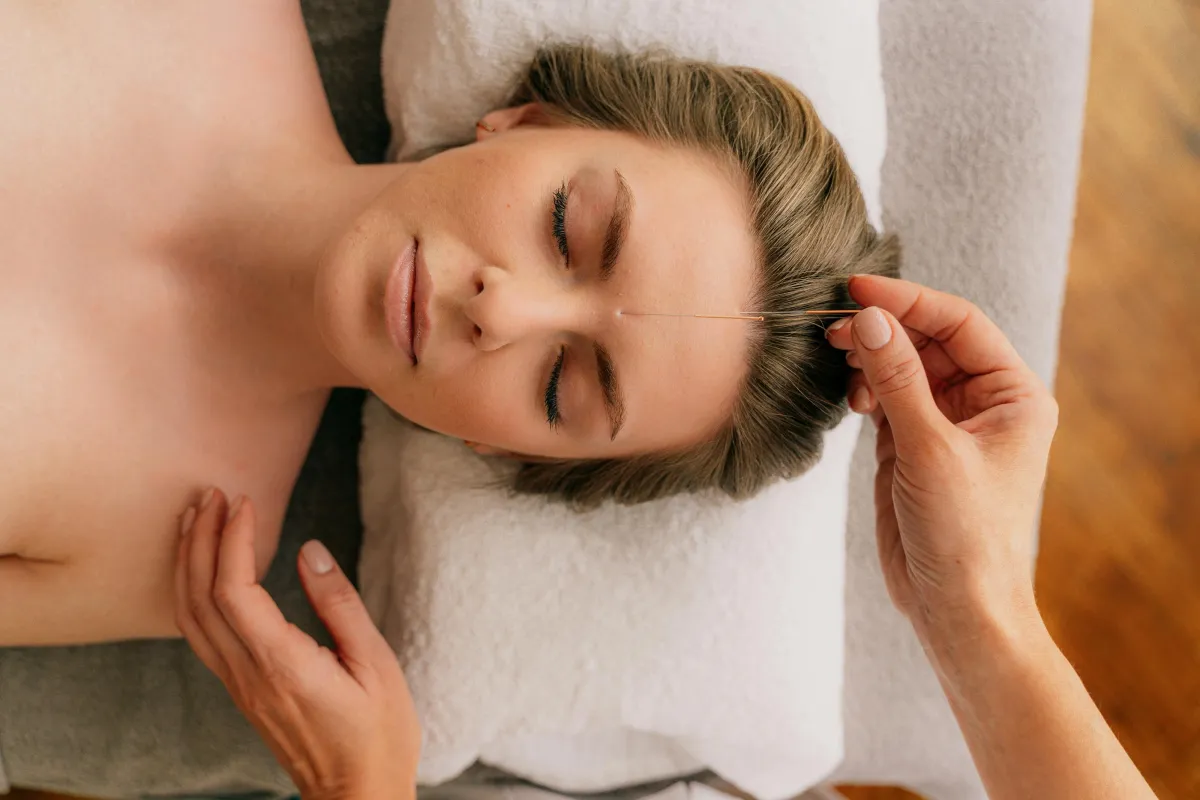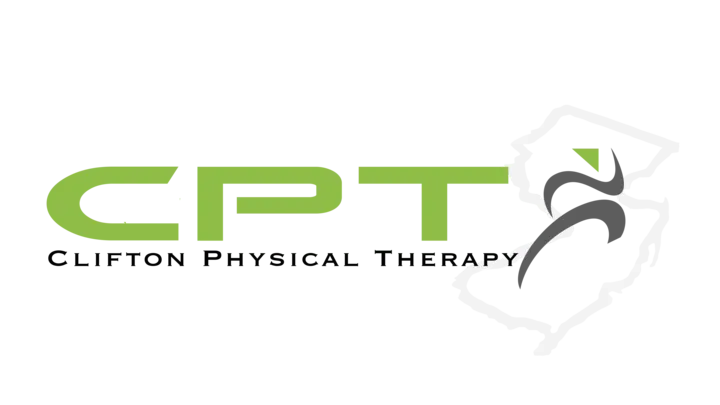Acupuncture for Migraines in Clifton, NJ
Clifton Physical Therapy

Introduction
Migraines can turn even a normal day into a struggle. If you’ve been relying on medications that only mask the pain or come with side effects, acupuncture may be the solution you’ve been looking for.
Key Takeaways
Acupuncture offers a natural, drug-free approach to managing migraines by restoring the body’s energy balance and promoting self-healing.
It works by stimulating specific points (acupoints) to improve circulation, relieve tension, and trigger the release of natural painkillers like endorphins.
Migraines are complex neurological conditions that can cause severe headaches, sensory disturbances (auras), and other symptoms influenced by hormones, stress, or sleep deprivation.
There are eight main types of migraines, including chronic, ocular, silent, and brainstem aura migraines — each requiring a personalized treatment approach.
Acupuncture has been clinically proven to reduce migraine frequency and intensity, often performing as well as or better than preventive medications, with fewer side effects.
It’s especially beneficial for people with chronic, hormonal, or medication-resistant migraines.
Most patients notice improvement after 4–6 sessions, with ongoing treatments helping maintain long-term results.
To start your journey toward a pain-free life, call (973)-241-1338 and schedule your acupuncture session today.
What Is Acupuncture?
Acupuncture is a healing practice that comes from Traditional Chinese Medicine (TCM). It involves placing very thin, sterile needles into specific points on the body to help restore balance and promote natural healing.
Practitioners of acupuncture believe that the body’s energy—called “qi” (pronounced “chee”)—flows through invisible pathways known as meridians. When this energy moves freely, the body stays healthy. However, when the flow of qi becomes blocked or unbalanced, it can lead to pain or illness.
By inserting needles into particular acupuncture points (acupoints), acupuncturists aim to restore the smooth flow of qi and bring the body back into balance. There are about 350 recognized acupoints spread across 14 main meridians, each linked to specific organs and bodily functions.
Modern research suggests that acupuncture may stimulate nerves, muscles, and connective tissues, improving blood circulation and triggering the release of natural pain-relieving chemicals like endorphins. This stimulation can help the body:
Regain internal balance
Relieve pain and tension
Support the body’s natural healing processes
What Are Migraines?
These neurological conditions cause a pounding headache, although this is not always true. Many people who have migraines also feel more sensitive to light, sound, and smell.
Auras are symptoms that can appear during or before a migraine, often affecting a person’s vision. Many patients describe seeing bright flashes, lines, shapes, or partial vision loss. Some may feel numbness or tingling in their limbs or face, while others report ringing inside the ears.
These aura symptoms usually develop within about five minutes and typically fade within an hour. In some cases, individuals experience a prodrome phase up to 48 hours before the migraine starts. This phase can include symptoms such as excessive yawning, feelings of irritability, depression, food cravings, stiff neck, or constipation.
There are 3 main types of aura: sensory, aphasic, and visual. Visual aura symptoms are the most common, accounting for 98% of all cases.
A visual aura may appear as spots, zigzag patterns, flashes of light, or temporary vision loss. Despite being the most frequent type, visual auras can confuse patients and doctors, especially when determining whether they affect one or both eyes. Genuine auras typically affect both eyes and originate from your brain.
A sensory aura typically begins as tingling or numbness, starting in your fingers or mouth and sometimes spreading to other areas. It can also affect just one part of the body. Similar to the visual aura, it develops slowly and gradually.
Aphasic auras are less common and involve difficulty with speech. Those affected may struggle to find the right words or have their speech come out incorrectly. Like sensory and visual auras, they often have a gradual buildup, usually followed by headaches.
Types of Migraine
There are eight different kinds of migraines, each with unique symptoms. These include:
Ocular migraine—This migraine causes total or partial loss of vision in a single eye, and some people may feel a dull pain behind that eye.
Common migraine—This type happens without an aura.
Chronic migraine—This type leads to symptoms of varying intensity at least fifteen days each month.
Silent migraine—In this case, individuals experience aura symptoms but do not have a headache.
Hemiplegic migraine—This migraine causes neurological symptoms on one side or part of the body, such as weakness, temporary paralysis, numbness, or tingling. It may also lead to dizziness and vision changes.
Complicated migraine—This type also occurs with an aura.
Brainstem aura migraine—This migraine causes pain at the back part of the head and may also lead to vertigo, slurred speech, vision loss, or balance issues before the headache starts.
Status migrainosus—These migraines are rare and can last longer than seventy-two hours, causing nausea and intense head pain.
Causes of Migraines
Researchers have studied migraines extensively, but the actual cause is still unclear. Nerve signals and hormonal changes are believed to influence the brain’s blood vessels and the body’s response to pain.
If the brain’s blood vessels widen, more oxygen and blood will flow to your brain. This can lead to the release of a substance known as prostaglandins. Prostaglandins can help control pain and inflammation, but higher levels can increase discomfort.
Estrogen plays a role in managing the brain’s chemicals that affect how we feel pain. Some women could have migraines around their menstrual period because of a drop in their estrogen levels. Studies indicate that some triggers, like lack of sleep or stress, can lead to the start of migraine attacks.
Who Can Benefit from Acupuncture for Migraines?
Acupuncture can help a wide range of migraine sufferers, including those who experience:
Chronic migraines that occur 15 or more days per month
Hormonal migraines linked to menstrual cycles or menopause
Tension or stress-induced headaches
Migraines resistant to medications
Our licensed acupuncturist, John Miller, LAc, has helped countless patients in Clifton, NJ, find lasting relief from migraines through personalized treatment plans that address both the symptoms and the root cause of their headaches.
What Does the Research Say About Acupuncture for Migraines?
Over the past two decades, researchers have studied acupuncture extensively for its role in migraine prevention and pain management.
A study published in the Journal of Neurology found that patients receiving regular acupuncture sessions experienced fewer migraine days per month compared to those receiving conventional medical care. Another clinical review in the British Medical Journal reported that acupuncture provided equal — and in some cases, better — results than prophylactic medications, with fewer side effects.
How Many Sessions Are Needed to See Results?
The number of sessions depends on your condition and how your body responds. Many patients begin to feel relief within the first four to six sessions. For chronic migraine sufferers, consistent sessions over several weeks can lead to lasting improvement.
Once the migraine frequency decreases, maintenance sessions every few weeks or months can help sustain results and prevent flare-ups. John will guide you through a schedule that fits your lifestyle and goals.
Call Clifton Physical Therapy today at (973)-241-1338 to book your acupuncture session.
What others are saying
"I recently had ankle surgery and Clifton PT has been nothing short of amazing! My goal was to get back to playing soccer as quick as possible before the college season started and so far I'm right on track. Izzy, Bianca, Tiff, and John have gone above and beyond to make sure I'm back to 100%. Couldn't be more grateful to be treated by the best team ever!." - Nat Rufino

All the therapists at Clifton Physical Therapy are awesome, but I spend most of my time with Izzy and Bianca—and they’ve been amazing. They’re enthusiastic, knowledgeable, and always take the time to explain what I’m doing and what my issues are. Their positive energy and clear communication make a big difference in my recovery." - Bryan Tompkins

"Going Clifton physical therapy was one of the best thing that came out of my back pain! Every single staff member is amazing and cares for your recovery! I have been with them for the past couple of months and now continuing their workout program! I can’t recommend them enough! Tiffany, Izzy, Bianca and everyone else I have worked with there! Can’t rave about them enough!!." - Monica Mehta

"Clifton Physical Therapy has been a great place for me to heal my meniscus tear. The staff is very knowledgeable and friendly, and has been extremely helpful in guiding me through my recovery. I highly recommend their services.." - Kelly Bevando

Clifton Physical Therapy
✆ Phone (appointments): (973)-241-1338
Address: 1059 Bloomfield Ave, Clifton, NJ 07012
